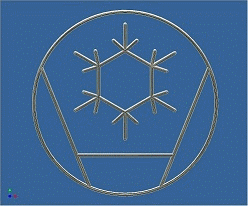 Cryopumps
Cryopumps
applied cryogenics supports a broad array of cti cryopump
and cryo pump systems designed to deliver exceptional performance,
reliability and productivity, a veteran owned company providing global
support.
Cryopump Operation
Two low-temperature stages required to use a cryopump are produced by mechanical refrigeration. A remote compressor supplies helium gas at room temperature (300 K) with a pressure of about 300 psig. Gas passes through a heatexchanger material in a piston-like displacer within the cylinder of the refrigerator. The gas cools to the first-stage operating temperature near 65 K as it passes through the displacer. The displacer is moved by a motor and crank or by pneumatic pressure to transfer gas from the space at the warm end to the cold end. As the displacer reaches the point where the warm volume is minimum and the cold volume is maximized, the exhaust valve is opened. The refrigerator exhaust line is maintained at about 100 psig by the compressor. Cold gas in the cylinder expands to produce even lower temperatures and flows back through the heat exchange material in the displacer to the compressor. As it leaves the refrigerator, the gas is at room temperature. Helium is transported to and from the compressor by flexible metal lines.
A second stage of refrigeration is necessary to produce the 10 to 20 K temperature. Part of the gas from the 65 K first stage passes through another heatexchanging displacer. After precooling to about 10 K, the helium gas expands and cools some more when the exhaust valve opens. Heat is conducted from the second stage array parts through the wall of the cylinder to the cold gas. The helium then flows back through the second and first stage displacer heat exchangers and exits the refrigerator slightly above room temperature. The first and second stage displacers are linked together and are moved by a motor-driven crank mechanism or by pneumatic action.
Helium is used in the refrigeration cycle because it does not become liquid or solid at very low temperatures, even well below 10 K. The compressor continuously recirculates the helium and maintains the pressure difference; compressing helium makes the gas hot, so the compressor has air or water cooling to bring the gas back to room temperature. Because the compressor must be lubricated and internally cooled by oil, the compressor also includes components to separate oil from the helium stream. Contaminants in the helium stream can reduce the performance of the refrigerator and cause noise or mechanical damaged, so the absorber must be replaced from time to time.
